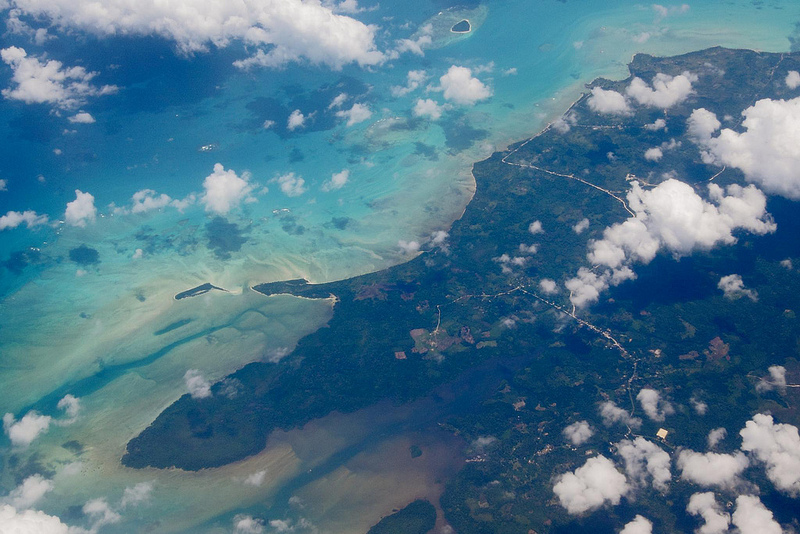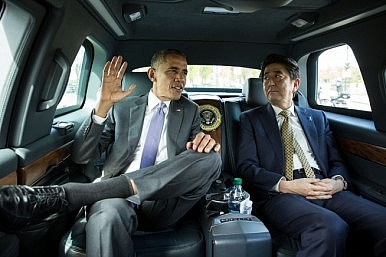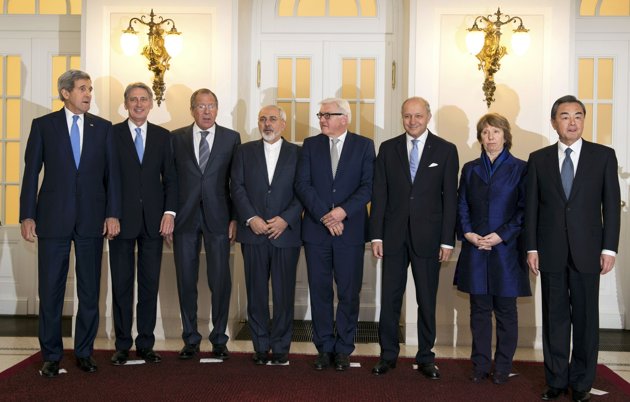In July 2016, an international tribunal ruled that China’s reclamation program does not comply with international law, prompting calls from the Philippines for an end to Beijing’s pattern of assertiveness against the littoral states of South East Asia. China however has resisted, and responded to direct pressure from the United States by snubbing President Obama at the G20 Summit in Hangzhou and conducting joint naval and air exercises with Russia.
Since the end of 2013, China’s land reclamation program has transformed previously submerged coral atolls, termed “low tide elevations”, into fully formed artificial islands. Some of these new bases, termed “unsinkable aircraft carriers” within defence circles, are equipped with 3,000 metre runways, living quarters, and radar installations. Satellite images from the Washington D.C. based think tank, Asia Maritime Transparency Initiative, have revealed the advanced nature of these facilities. More than $5.3 trillion in trade passes by these facilities each year.
The pace and scale of Beijing’s recent activity in the South China Sea has for a long time been the subject of attention. In a region with overlapping maritime disputes, major fishing grounds, and potentially the largest untapped hydrocarbon reserves anywhere in the world, the stakes could not be higher.
Beijing appears intent on slowly shifting the status quo in the South China Sea, laying the conditions either to declare a series of 200-mile Economic Exclusion Zones (EEZs) around the Spratly and Paracel Islands, or to enforce an Air Defence Identification Zone (ADIZ) across the entire South China Sea. China’s artificial island program combined with its increasingly capable blue water navy have inspired fears that the South China Sea will become a regional flash point, where interstate conflict could arise.
The Hague tribunal rules against Beijing
Since April 2012, China and the Philippines have been engaged in a maritime standoff over Scarborough Shoal in the Spratly island chain. China Coast Guard (CCG) vessels have been blocking access to the reef and its lucrative fishing stocks since then, which prompted the Philippines to take China before the court of arbitration in The Hague under the auspices of the UN Convention on the Laws of the Sea (UNCLOS), in 2013. China refused to participate in any legal proceedings, even going so far as to produce a position paper refusing to recognise the UN arbitration process or its legal implications.
On July 12 2016, the Permanent Court of Arbitration in The Hague delivered its ruling on the status of China’s territorial claims in the South China Sea. The findings were as follows:
-
There is no legal basis under international law for China’s “Nine-Dash Line” claim. The maritime zones established under UNCLOS take precedent, annulling any historic rights China claims it has.
-
The artificial islands created by China in the Spratly Islands chain are considered reefs under UNCLOS, after the tribunal assessed them under their “natural conditions”.
-
The islands, constructed on coral reefs, have caused substantial damage to the local environment, placing China in breach of its commitment to sustain the fragile ecosystem.
-
The Spratly Islands are not permanently inhabited or self-sufficient and therefore they are classified as rocks and cannot generate their own economic exclusion zone. Where China’s claims overlap with the Philippines’ EEZ, China’s claims are annulled.
-
The Chinese Coast Guard has repeatedly violated the Philippines’ right to enforce its EEZ where Chinese fishermen have repeatedly been illegally fishing.
China’s response
The administration of President Xi Jinping and the Communist Party is now faced with a major foreign policy headache. For China, the ruling in July was a disaster, serving to undercut and rebuke Beijing’s posture towards the South China Sea.
While the ruling had implications for all claimants in the region, it is China with its facilities in the Spratly and Paracel islands that came off the worst. Thus over the course of the summer, the Xi Administration came out fighting.
China’s foreign ministry released a statement declaring the ruling “null and void,”. Speaking more forcefully, Vice-Foreign Minister Liu Zhenmin said China reserved the right to establish an Air Defense Identification Zone (ADIZ) over the South China Sea if provoked. Speaking in New Delhi, China’s ambassador to India Liu Jinsong proceeded to blame Japan for the tribunal’s negative outcome.
In the weeks after the ruling, the drumbeat of nationalist rhetoric continued. The People’s Daily newspaper circulated cartoons on social media implying the United States and Japan were behind Manila’s actions. An editorial declared “any attempts to undermine China’s territorial sovereignty and maritime rights and interests will prove to be delusion”. One editorial blasted the United States as a ‘blustering paper tiger” while another warned that the “Chinese people will firmly support our government to launch a tit-for-tat counterpunch, if the US and Japan use the ruling to pile military and political pressure on Beijing”.
Coverage was also given to Defence Ministry spokesman’s Yang Yujun who stated that the PLA was on alert to protect China’s sovereignty. In discussing the potential for further Freedom of Navigation Operations (FONOPs) by American warships he quoted a Korean War era warning: “We have wine if friends come, and we have shotguns to greet wolves.”
No ‘Chexit’ from the South China Sea
In the aftermath of The Hague ruling the Filipino general public and media called for a “Chexit” by Beijing from the South China Sea, a deliberate reference to Britain’s recent vote to leave the European Union. Beijing, however, is unlikely to either back down or display any intention to reverse its claims. In 2010, the Hu Jintao administration identified the South China Sea as a “core interest” comparable in importance to Tibet or Taiwan.
From July to September, China and Russia held several of the largest joint naval and air exercises ever witnessed between the two states, in a dramatic display of military strength. For periods of 5 to 10 days each month, sections of the disputed waterway were closed as flotillas of warships and aircraft conducted what were observed to be “island seizing operations”.
In a clear signal intended for the Philippines, an H-6K nuclear capable bomber was flown close to Scarborough Shoal.
As the G20 summit in September approached, Beijing toned down nationalist rhetoric on the South China Sea, not wanting to overshadow China’s first G20 as host. With the world’s attention focused on Hangzhou however, large numbers of Chinese flagged vessels positioned themselves around Scarborough Shoal where they remain. Filipino fishermen and the Navy report that in addition to the four CCG vessels that have blockaded the reef since 2012, vessels resembling dredgers are now also visible.
Beijing has routinely sought to demonstrate its strength when other states are considered to be interfering with its sovereignty, and in the South China Sea we are witnessing just that.
Photo: “The Greater Natuna Island, South China Sea” (2013), by stratman² via Flickr. Licensed under CC 2.0.
Disclaimer: Any views or opinions expressed in articles are solely those of the authors and do not necessarily represent the views of the NATO Association of Canada.




